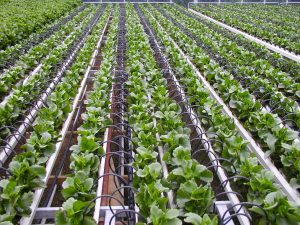Thomas O’Donoghue….Building and Construction Technology
Noah Wartenberg……..Building and Construction Technology
Heidi Mannarino……….Environmental Science

Flood Irrigation

Drip Irrigation
It’s a dusty, breezy day on Jack Durham’s sweet corn farm in Central Alberta, Canada. His family has been on this land for over 100 years. Outside, what seems like miles of plastic piping delivers slow drip water to the crops. With the land unusually dry and the wind blowing swirls of dirt around, his plants remain hydrated. But this was not always the system.
Jack has two framed photographs on his wall, both next to a window looking out on his land. One photo features the fields checkered with long, flooded trenches. The other photo features the same fields with giant overhead sprinklers, showering the crops with water. Jack carefully recalls each major shift in how his crops get water. With each major shift came a massive decrease in how much water he used.
Here in Southern Canada, the agriculture industry is heavily dependent on meltwater from the mountains. Climate change induced temperature warming has been causing mountain snowpack to melt early, leaving less water available during the growing season. Resultantly, many Albertan farmers have been seeing crop yield losses, especially in the last decade. However, because of their higher water efficiency, the Durham farm is able to remain as productive as ever. Watching some of his neighbors struggle has been hard, but Jack is sure he made the right choice in upgrading to such an efficient system. A choice, he claims, would have been impossible without major financial help provided by the provincial Albertan government.(source)
